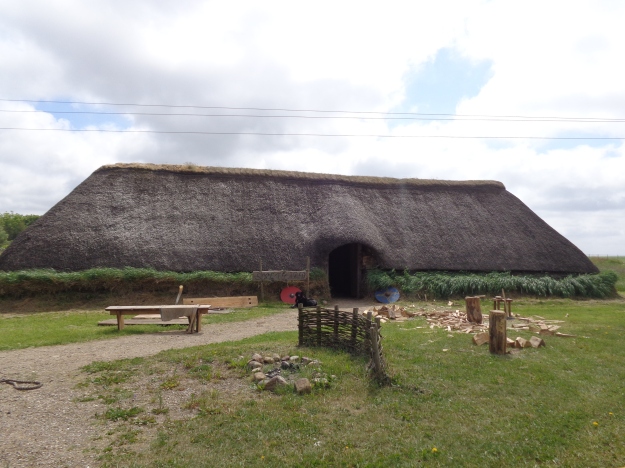I was back in my photo archives of places I have visited to dig out something I could do a small post on while working offshore. With work being extremely busy over the summer to exploit the long day light hours and good weather to perform maintenance work I will probably not have too much time for researching and reading so expect some shorter posts until we are out of August.
This post will be a bit of a commercial for Hjemsted Oldtidspark. Hjemsted in Southern Jutland is home to a living history site known as Hjemsted Oldtidspark (Ancient Period Park) and is known for its Iron Age museum and living history site but also for its Roman reenactment. I have always found it a little strange to reenact Roman period in a country that was not part of the Roman Empire but having dug a bit into it, Denmark actually had visits from Rome and so reenactment here could actually have good reasons.
Iron Age Denmark
Iron Age in Danish history is generally divided into three periods: Pre-Roman or Celtic, Roman and Germanic Iron-Age. For an area that did not share any immediate borders with the Roman Empire it is remarkable that it does play such a big part that it even defines the Iron Age classifications in Denmark.
Approximately 500 BC to 0 AD is what is defined as Pre-Roman Iron Age. There was at the time no such thing as a kingdom of Denmark and the country was split into a number of smaller chief-doms and kingdoms. The society was in rapid change as iron was replacing bronze and by 500 BC was the prominent material. In the preceding Late Bronze Age period trade had first shifted from trade routes down central Europe but towards the end of the period trade routes were disrupted and trade moved down Western routes allowing Denmark to adapt iron technology which in turn allowed the agriculture production to increase. Influence was redominantly Celtic but Roman ironware have found their way to Danish grave gifts. It was marked by indirect influence from the Roman Empire but towards the 1st century BC trading really picked up as Rome grew in size and power.
1st century BC the Roman Empire had moved closer and the Celtic culture had suffered at the hands on Julius Caesar and the Danish area was all of a sudden was Roman area of influence.Depending on different the writers the Roman period starts either at 100 BC or Year 0. The Roman Empire was expanding northwards and The Elbe River was likely to be the new frontier.
In 5 AD Tiberius and the Roman navy even made a reconnaissance around the peninsula of Jutland and could very well had been a pre-cursor for an invasion had the Romans not been defeated in Teutoburg Forest 4 years later. Later in the period the Romans were divided by internal strife and trade and contact became more rare.

The museum at Hjemsted which also houses living history events are based somewhat around Tiberius’ naval recon. While a settlement at Hjemsted did exist the museum plays very much with the idea that a Roman force could have landed and encamped for the night before travelling on. I very much recommend visiting the site during one of the living history events.




